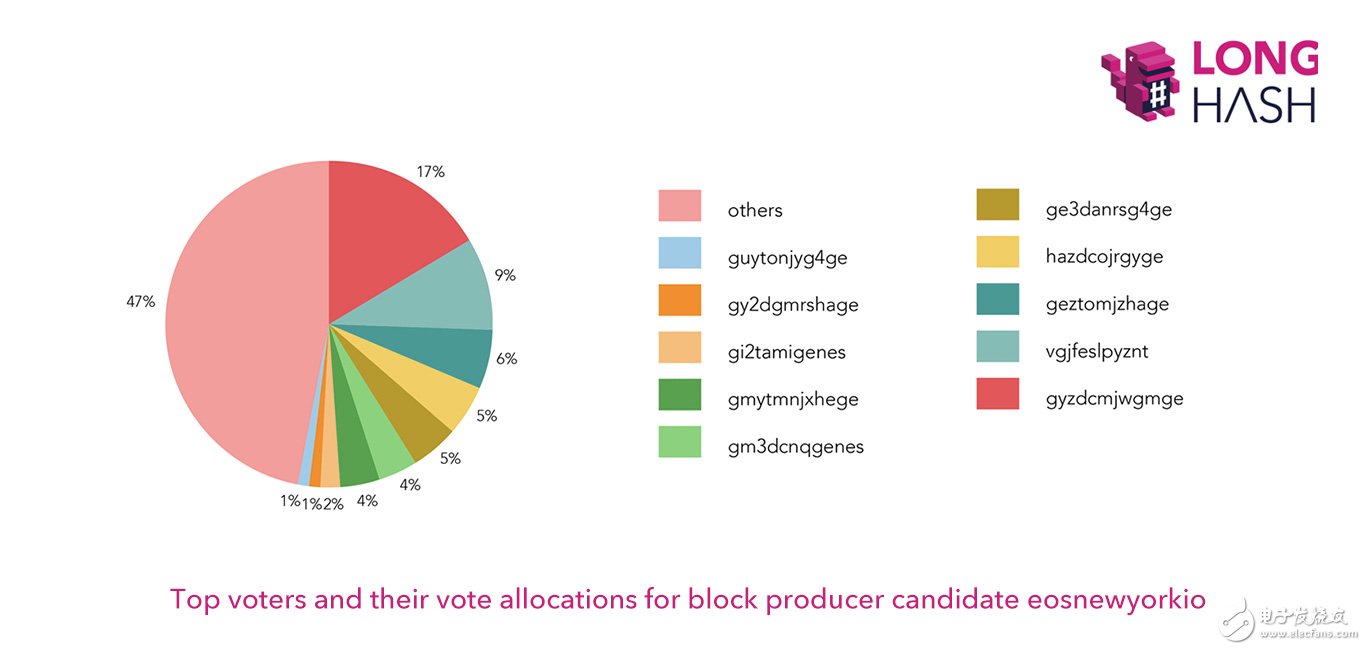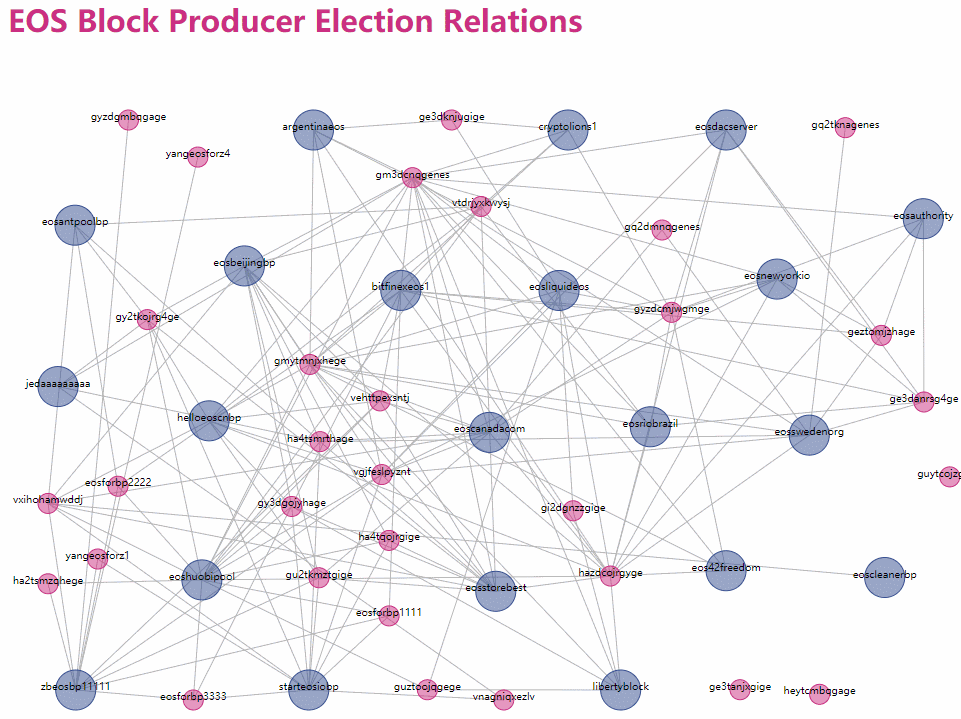Blockchain technology should be a decentralized democratic force. But is it actually like this?

Most transactions in the system are verified by proof of work (also known as mining), and this depends on the supercomputer-scale hash factory wasting enough electricity to support a medium-scale " country". In theory, the huge fees associated with mining make it difficult for any party to silently make malicious changes to the transaction records kept by the entire network.
But this also means that miners (such as China) who have access to cheap electricity may have a disproportionate amount of influence. The huge cost of mining makes transaction verification and its rewards concentrated in the hands of large and well-funded operating alliances.
To solve these problems, many blockchain projects are now experimenting with voting systems. The ability of each node to verify blockchain transactions is not based on the energy and electricity they use, but on how many votes they get. In this way, ensuring the security of the blockchain ledger will not incur a large amount of actual cost. These savings will give any system running a voting system a significant competitive advantage.
But the voting system based on the blockchain is now also encountering new problems. Take EOS, the high-profile blockchain project as an example-the project recently implemented its own voting system. In EOS, a small group of elected representatives or "block producers" will verify blocks for the EOS blockchain, and these representatives will be rewarded for their work. This is a lucrative activity, currently generating approximately US$400 million in profits each year.
Some people think this is a big problem. Ethereum founder Vitalik Buterin wrote in an article titled "Plutocracy is Still Bad" (Plutocracy is Still Bad): "Because the representative rewards in EOS are now so high [...], who will run Node competition has basically become another frontline in the US-China geopolitical and economic war." In other words, EOS network participants will be driven by interests to a large extent and collude.
In the analysis of the EOS voting system, the LongHash data team found that the voting of block producers on the EOS chain showed that there is a significant degree of integration between voting rights and the elected in elections with significant interests.

According to LongHash research, when EOS was released, a small number of EOS block producers received most of the votes of a small number of voters. In some cases, the votes of the top ten voters account for 50% of the votes obtained by elected representatives.
This brings serious governance risks to the system. How many votes an EOS participant can allocate to each candidate node depends on how many EOS tokens he has “collateralized†in the network, and these tokens will be hosted in the network in a short period of time. Therefore, voting rights are directly related to the wealth held in the system.
This process amplifies the risks of wealth concentration and market manipulation. Cryptocurrency exchanges usually hold a large portion of altcoins, such as EOS, which makes them fully capable of subverting the entire system. According to EOS voting rules, network participants can appoint a proxy to vote for them. This feature is most likely to be used by cryptocurrency exchanges to vote on behalf of their users, which increases concerns about collusion between exchanges and blockchain producers, and exchanges dominating block verification. The exchange's way of subverting the market to deal with transaction orders is enough to manipulate the cryptocurrency market, and this voting system will cancel the remaining few checks on the exchange's power to intervene in the market.
There are also questions about EOS' voting model.
The LongHash data team carefully studied the top-ranked voters who had bet on many EOS tokens in the last election, and found some interesting behavior: a large voter (invested USD 72.9 million in EOS tokens) Ten nodes voted, but none of them are candidates for China. However, the number of elected representative nodes in China accounted for 38% of EOS super nodes (8 out of 21).

The election process has just barely managed to cope with this first real test. But it has deviated from the original plan: only one block producer participated in the first election, instead of the 21 block producers that normally participate in the management of the state of the system.
Adding fuel to the fire is that such an apparently low turnout is most likely due to too few informed voters. The rules for participating in the election process are obscure. The main source of information on how to vote for block producers is saved by EOS Canada in the form of short blog posts and videos. EOS Canada itself is also a block producer, which is different from Block.one (the main architect of EOS). And managers) entities.
The only voting methods generally available are the two command line tools. This undoubtedly prevented a large number of EOS participants from voting: as of June 13, two weeks after the mainnet went live, only 6.45% of the participants had voted.
In order to defend the governance structure of EOS, especially in response to Buterin's claim that it is equivalent to "oligopoly or chaebolism," Thomas Cox, vice president of Block.one products, stated during the EOS pre-sale and mainnet launch:
[. . .] The more tokens will give you more power, but it will also bring you greater risks. Owning more tokens will be more affected by the negative results of the EOS blockchain.
Although if the entire system collapses, those who pledge more EOS tokens on the blockchain will indeed face greater risks, but the rewards of subverting the system are likely to exceed these shortcomings. In any case, until the EOS voting system can actually prove that it can provide effective governance, the feasibility of the system is still in doubt. In other words, it does not prove that it is more profitable to be a king of ruins than to be a wealthy citizen of a prosperous city.
Good governance will determine the feasibility of EOS itself-that is, whether it will become a more aggressive tool for collusion and speculation, or a prosperous economic ecosystem with profound technical background and economic advantages compared with the current generation of blockchain systems.
Product Description
The combined pad mounted transformer places the transformer body, high-voltage load switch, fuse and other components in the transformer oil tank together. Because of being immersed in oil, the component volume is greatly reduced, the structure is more compact, and the installation is convenient and flexible. Fully insulated, fully sealed structure, safe and reliable, easy to operate, maintenance free. It is widely used in residential areas, high industry centers, factories and mining enterprises, airports, stations, schools and other places.
Characteristics of pad mounted transformer
1. Compact structure, small volume, convenient and flexible installation;
2 Fully insulated and sealed structure, safe and reliable, maintenance free, and reliable protection of personal safety;
3 The high-voltage side is protected by double fuses, in which the plug-in fuse is a double sensitive fuse (temperature and current) and the backup fuse is a current limiting fuse, reducing the operating cost;
4 High voltage incoming line adopts cable connector structure, which is fully insulated, safe and reliable, and easy to operate;
5 It can be used for both ring network and terminal. It is very convenient for conversion and improves the reliability of power supply
6 The transformer is a three-phase three column structure, and the iron core adopts the stepped joint process, which has low noise, low loss, and strong short-circuit and overload resistance.
7 The box can adopt anti-corrosion design and special painting treatment according to the requirements of the operating environment. It has the "three prevention" functions, namely, anti condensation, anti salt fog, and anti mold functions, and can meet the anti-corrosion requirements under high temperature and high humidity environments.
Pad Mounted Transformer,combined pad mounted transformer,prefabricated substation,Complete box type transformer,Box type substation
Henan New Electric Power Co.,Ltd. , https://www.newelectricpower.com